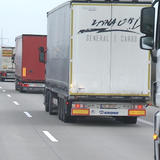-
Prehistory
1975
-

Gunar Streckeisen worked under Prof. Erhard Wielandt at the Institute of Geophysics of the ETH Zurich. Together they elaborated the basics for an electronic forced-feedback seismometer with high dynamic range. -
The Beginning
1979
-

Gunar and Dorothea Streckeisen launch the G. Streckeisen AG. -
The STS-1
1981
-

The STS-1 is the first broadband-seismometer on the market.Instruments for 75 three-component stations are manufactured. Some of them are still working.
-
The Broadband-Technology
1985
-

Erhard Wielandt and Joe Steim present the "Very-Broad-Seismograph" in the Annales Geophysicae. It's a combination of a modified STS-1 together with the seismic digital recorder developed by Steim giving broadband-seismology a big boost.
The term "Broadband-seismology" is introduced. -
The relocation
1986
-

The company prospers and moves to its present location in Pfungen near Winterthur, Switzerland. -
The STS-2
1991
-

The STS-2 is the first triaxial broadband-seismometer on the market. It replaces the STS-1 for most applications. -
Low-power Version of the STS-2
1995
-

More than 2200 STS-2 left the factory until production ended in 2010. Most of them are still collecting data. -
The Restart
2010
-
 Gunar und Dorothea Streckeisen retire.
Gunar und Dorothea Streckeisen retire.Staff members Robert Freudenmann and Lutz Wiesner take over the company by launching the Streckeisen GmbH, Seismic Instrumentation.
The G. Streckeisen AG goes inactive and 2018 into liquidation. -
The STS-2.5
2010
-

The STS-2.5 replaces the STS-2. Performance is increased.
Already 1000 instruments are manufactured. -
The STS-5A
2015
-

In collaboration with Kinemetrics Streckeisen Seismic Instrumentation launches the borehole version of STS-2.5: the STS-5A. It is successfully deployed as the main seismic sensor in the Alaska Transportable Array. -
The STS-6A
2017
-

The STS-6 successfully challenges the performance of the STS-1. Currently the best broadband-seismometer available it opens untapped research opportunities. -
The MBB-2
2018
-

The Streckeisen Seismic Instrumentation are taking over the production of the MBB-2 from Metrozet, a Kinemetrics division.